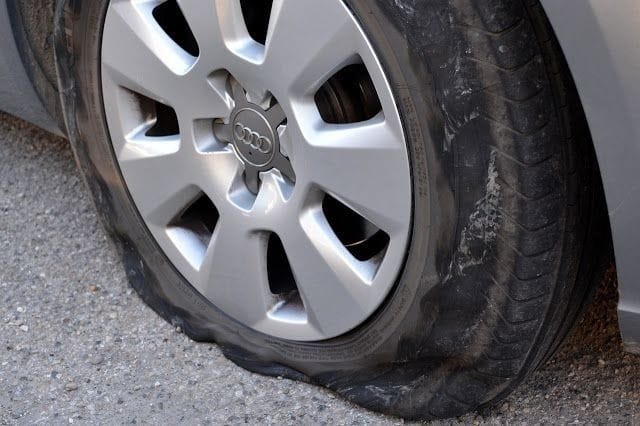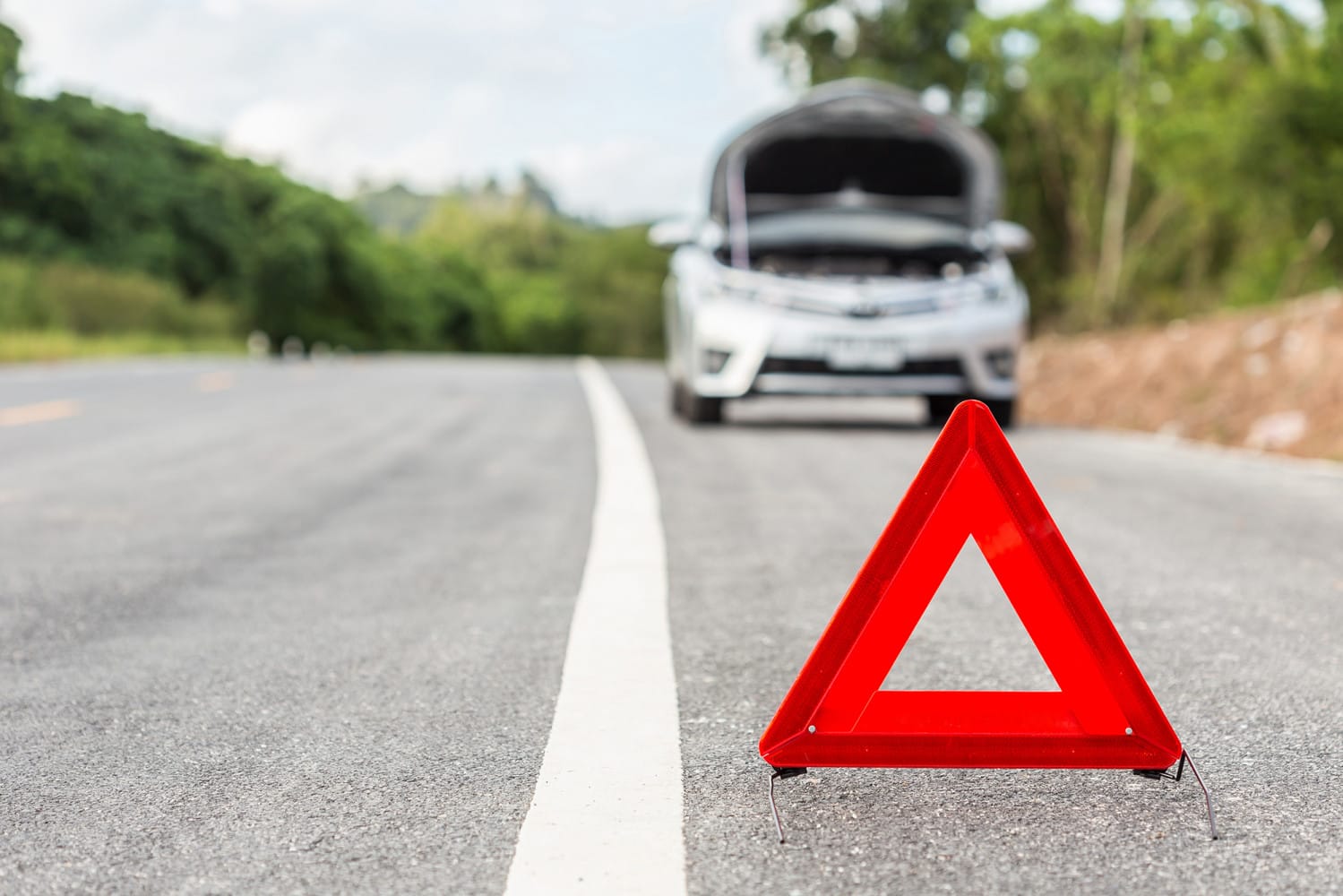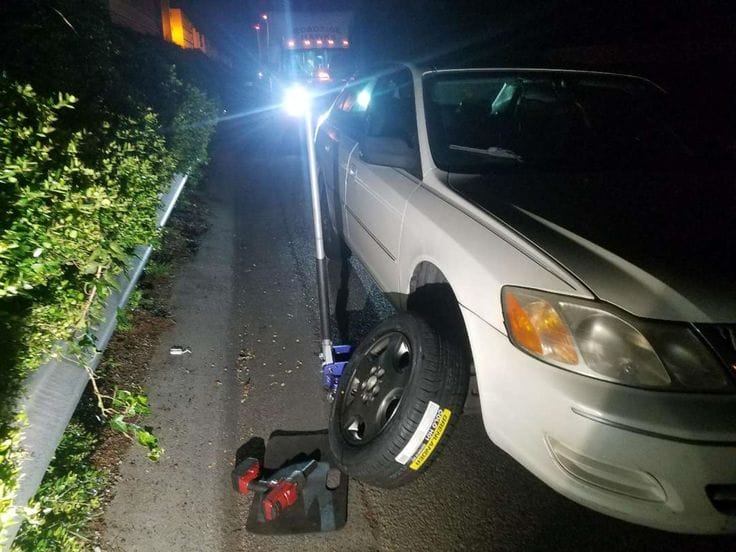Tire Blowout Prevention | A Driver’s Guide to M25 Safety

Did you know Tire Blowout Prevention contribute to over 500 breakdowns every day on England’s motorways alone? Most of these incidents could be prevented.
While motorways are statistically among the safest roads to drive on, experiencing a blown out tire dramatically increases your danger level. This is particularly concerning on busy routes like the M25, where hard shoulders have seen 41 collisions in recent years.
Consequently, understanding what causes tire blowout incidents is crucial for your safety.
One of the main causes is under-inflation, which increases friction and heat until the sidewall bursts. Additionally, tires naturally weaken over time and should be replaced every 6 years, regardless of appearance. Overloading your vehicle or driving faster than your tire’s speed rating also significantly increases blowout risk.
In this guide, we’ll walk you through everything you need to know about preventing tire blowouts, handling them safely if they occur, and specific considerations for navigating the M25. Let’s help you stay safe on one of Britain’s busiest motorways!
What Happens During a Tire Blowout
A tire blowout happens in just ¼ of a second, yet what follows can make the difference between a safe recovery and a dangerous crash. Understanding what occurs during those critical moments is essential for proper response.
How to recognize a blown out tire
When a tire blows out, you’ll typically experience three distinct sounds. Initially, you’ll hear a loud boom or bang as the tire pops. This is followed by a whooshing sound of air escaping, and finally, a repeated flapping noise as the deflated tire hits the road.
Physically, you’ll feel the vehicle suddenly slow down and violently pull to one side. The sidewall of the tire has burst, releasing all pressure at once. Many drivers describe feeling a strong jerking motion, making the vehicle harder to control.
Front vs rear tire blowout behavior
Front and rear tire blowouts create notably different sensations. With a front tire blowout, you’ll experience a violent jerking motion and your steering wheel will forcefully pull toward the damaged tire. This makes steering control your primary challenge.
Conversely, a rear tire blowout will be felt through your seat. The vehicle will begin fishtailing or behaving as though you’re driving on a slippery surface. This creates a more complex situation where the rear end may drift unpredictably, making it harder to maintain your lane position.
Furthermore, heavier vehicles with high profile tires face even greater challenges, as the extra weight increases the force pulling the vehicle to one side.
Why sudden braking is dangerous
Your natural instinct during a blowout might be to slam on the brakes—this is precisely what you shouldn’t do. Sudden braking is extremely dangerous because it creates an imbalance of force.
When you brake hard after a front tire blowout, you throw more weight onto the already damaged tire, increasing the risk of swerving. Meanwhile, forceful braking during a rear blowout throws the vehicle out of balance, potentially causing fishtailing or even spinning completely around.
Moreover, at highway speeds, any forceful steering combined with braking can be disastrous. The increased drag from the damaged tire may even cause the vehicle to flip over when braking suddenly.
How to Stay Safe During a Blowout on the M25
Experiencing a tire blowout requires immediate action—your response in those first few seconds determines your safety. The M25, as one of Britain’s busiest motorways, presents unique challenges when dealing with this emergency.
Grip the wheel and steer gently
When facing a tire blowout, your first priority is maintaining control. Grip the steering wheel firmly with both hands and maintain a straight-forward course. The vehicle will naturally pull toward the side of the blown tire, so gently counter this pull without making sudden movements. For front tire blowouts, the car will violently pull to that side, requiring steady counter-steering. Accordingly, if you experience a rear blowout, the vehicle may begin fishtailing—keep your steering movements minimal to prevent overcorrection.
Use hazard lights immediately
As soon as you recognize the blowout, activate your hazard warning lights. This crucial step alerts other motorists to your situation, giving them time to create space around your vehicle. Subsequently, put on your sidelights as well if visibility is poor or it’s dark outside. This dual lighting system maximizes your visibility to other drivers, essentially creating a safety buffer as you manage the situation.
Move to the hard shoulder or ERA
Once you’ve stabilized the vehicle, begin looking for a safe place to stop. On the M25, aim for either the hard shoulder or an Emergency Refuge Area (ERA) where available. Pull as far left as possible, with your wheels turned to the left. This positioning serves two purposes: it maximizes your distance from traffic and prevents your vehicle from rolling into live lanes if accidentally released. Always remember that attempting to reach the next exit is preferable to stopping in a dangerous location.
Avoid stopping in a live lane
Never stop in a live traffic lane unless absolutely necessary. If you must stop in a live lane due to complete vehicle failure, turn on your hazard lights immediately and call 999. Should you manage to reach the hard shoulder, park your vehicle as far left as possible. After stopping safely, exit from the left-hand doors only and get behind the safety barrier where possible. Primarily, keep yourself and passengers away from traffic—never attempt repairs near live lanes.
What to Do After You’ve Stopped Safely
Stopping safely after a tire blowout is only half the battle – what you do next matters just as much for your safety. Once stationary, follow these critical steps to protect yourself and get back on the road safely.
Exit the vehicle from the left side
After experiencing a tire blowout and stopping safely, remain calm and assess your surroundings. First, unbuckle your seatbelt and ensure all passengers do the same. Then, exit your vehicle exclusively from the left (passenger) side doors, away from traffic. This simple yet vital step dramatically reduces your risk of being struck by passing vehicles. Before opening any door, check your mirrors and glance over your shoulder to confirm no vehicles or cyclists are approaching.
Move behind the barrier if possible
Once outside, move yourself and all passengers behind the safety barrier immediately. Never remain between your vehicle and live traffic lanes – this area is extremely dangerous. If no barrier exists, walk up the embankment or stand as far from the carriageway as possible. Above all, keep children under close supervision and pets securely leashed. Remember that your possessions are replaceable – your life isn’t.
Call for roadside assistance or emergency services
With everyone safely positioned, call your breakdown service provider. Have your membership details, exact location, and vehicle information ready. If you’re on the M25, look for the nearest marker post which displays your precise location. In case of no breakdown coverage or if you’re in immediate danger, dial 999 and request highway assistance. Nevertheless, if you have a personal locator beacon or emergency SOS button in your vehicle, use it as it transmits your exact GPS coordinates.
When to attempt tire blowout repair
Generally speaking, attempting repairs on motorways like the M25 is dangerous and ill-advised. Temporary fixes such as tire sealants or space-saver spares should only be considered if:
- You’re in a safe location away from traffic
- You have proper visibility (daylight and clear weather)
- You possess the necessary skills and equipment
Otherwise, wait for professional assistance. If you must change to a spare, position warning triangles 45 meters behind your vehicle first. Yet even then, roadside professionals have proper lighting, equipment, and safety protocols that make them far better equipped to handle tire blowout repairs.
Top Causes of Tire Blowouts and How to Prevent Them
Prevention saves lives when it comes to tire failures. By understanding what causes a tire blowout, you can take steps to avoid this dangerous situation entirely. Let’s examine the primary causes and practical prevention strategies.
Underinflated or overinflated tires
Incorrect tire pressure remains the leading cause of blowouts. Underinflated tires bulge outward, causing excessive contact with the road. This creates friction and heat that eventually weakens the sidewall until it bursts. Conversely, overinflation puts too much stress on the outer rubber, making it more vulnerable to damage. I recommend checking tire pressure weekly, especially before long journeys or when temperatures change dramatically.
Old or worn-out tires
Tires naturally deteriorate over time. Even those that look good externally may have weakened internal structures. Replace tires at least every 6 years, regardless of appearance. Watch for warning signs like cracks in the sidewall, visible bulges, or tread depth below 3mm. These indicate your tires have become dangerous and require immediate replacement.
Overloading your vehicle
Exceeding your vehicle’s weight capacity puts enormous strain on tires. Overloading increases contact with the road, accelerating wear and raising tire temperature. This can lead to premature failure, especially if combined with underinflation. Heavier loads require higher tire pressure—check your vehicle manual for specific recommendations based on cargo weight.
Driving beyond tire speed rating
Every tire has a maximum speed rating indicated by a letter on the sidewall. Exceeding this limit is extremely dangerous. At high speeds, the rubber overheats and may cause a catastrophic blowout. Furthermore, mixing tires with different speed ratings is ill-advised; if unavoidable, place lower-rated tires on the front axle. Need help preventing tire blowouts? Tire Vortex offers professional tire inspection and maintenance services to keep you safe on the road.
Tire sidewall damage and valve issues
Sidewall damage is particularly dangerous since it compromises the tire’s structural integrity. Regular inspection is vital—look for bubbles, bulges, cuts, or cracks. Unfortunately, sidewall damage cannot be repaired; the tire must be replaced. In addition, be cautious around potholes and kerbs, as impacts often cause hidden damage that develops into blowouts later.
Conclusion
Tire blowouts represent a significant safety risk for drivers, especially on busy motorways like the M25. Throughout this guide, we’ve covered essential knowledge that could save your life during these frightening emergencies. Most importantly, regular maintenance stands as your first line of defense against catastrophic tire failure.
Remember that proper tire pressure checks, timely replacement of aging tires, and respecting weight limits significantly reduce your blowout risk. Additionally, understanding the correct emergency response—gripping the wheel firmly, avoiding sudden braking, and safely exiting your vehicle—can transform a potential disaster into a manageable situation.
Safety on the M25 requires vigilance and preparation. Consequently, knowing where Emergency Refuge Areas are located and how to properly use the hard shoulder becomes crucial knowledge for every driver. Don’t wait until it’s too late – visit Tire Vortex today for quality tire services that can help prevent dangerous blowouts and ensure your safety on the M25 and beyond.
After all, prevention is far easier than dealing with the aftermath of a tire blowout at highway speeds. Your life and the lives of your passengers depend on these simple yet vital precautions. Take action now by implementing the preventative measures we’ve discussed, and you’ll dramatically reduce your risk while driving on Britain’s busiest motorway.
FAQs
Q1. How can I prevent tire blowouts on the M25?
Regularly check tire pressure, inspect for wear and damage, avoid overloading your vehicle, and replace tires at least every 6 years. Also, be cautious of road hazards and maintain proper tire inflation, especially before long journeys or during temperature changes.
Q2. What should I do if I experience a tire blowout while driving on the M25?
Stay calm, grip the steering wheel firmly, and avoid sudden braking. Gradually slow down, activate your hazard lights, and steer towards the hard shoulder or an Emergency Refuge Area. Once stopped safely, exit the vehicle from the left side and move behind the safety barrier if possible.
Q3. Is it safe to change a tire on the M25 after a blowout?
Generally, it’s not advisable to attempt tire repairs on busy motorways like the M25. Wait for professional assistance unless you’re in a completely safe location, have proper visibility, and possess the necessary skills and equipment. Your safety is paramount.
Q4. What are the main causes of tire blowouts on motorways?
The primary causes include underinflated or overinflated tires, old or worn-out tires, vehicle overloading, driving beyond the tire’s speed rating, and damage to the tire sidewall. Regular maintenance and inspections can help prevent most of these issues.
Q5. How does a front tire blowout differ from a rear tire blowout?
A front tire blowout typically causes a violent jerking motion and pulls the steering wheel towards the damaged tire, making steering control challenging. A rear tire blowout is felt through the seat and can cause the vehicle to fishtail, making it harder to maintain lane position.

